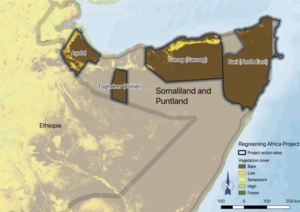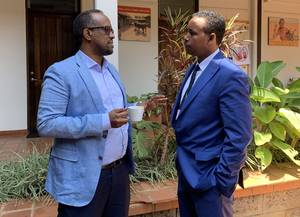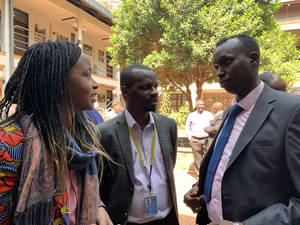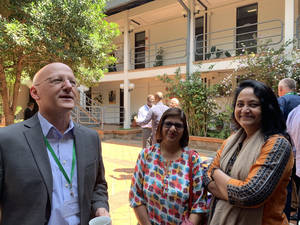After 30 years of conflict, Somalia is coming back
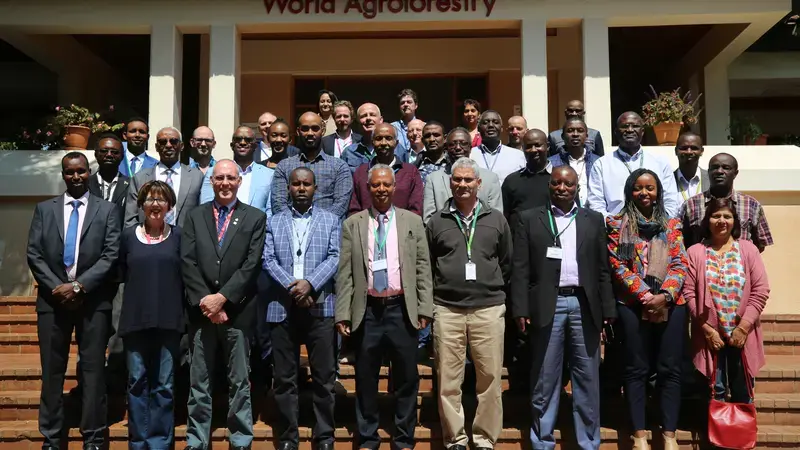
20 September 2019. Nairobi, Kenya. World Agroforestry (ICRAF). The meeting on the future of agriculture in Somalia, was attended by donors EU, USAID, JICA, UN agency FAO, and CG centres CIFOR, ICRAF, CIAT, CIP, CIMMYT, ICRISAT, IITA, ILRI and IRRI with ICARDA and IFPRI interested and on remote.
A background document for the meeting noted that donors with programmes in Somalia — such as USAID’s GEEL, the European Union’s OUTREACH and RESTORE, and the UK Department for International Development’s PIMS — hoped that the CGIAR’s improved technologies and approaches could be brought in and applied to agriculture and natural resource management in the country.
- A closer partnership could lead to pathways that benefit vulnerable populations
- The mechanism may be technical backstopping, formal and informal capacity-building programs, gene-bank conservation, performance trials or support in direct implementation.
- Climate-smart crops that are low resource — like sesame, sorghum, cowpea, sweet potatoes, cassava and millet — short-season and/or drought-tolerant can enhance livelihoods and promote resilience of smallholders.
- Combining these with trees that are suited to the different agro-climatic zones enhances productivity and leads to more sustainable agricultural systems.
Funded by USAID, GEEL aims to boost Somalia’s exports of quality agriculture and fish, increase dairy production, reduce reliance on imports, and increase jobs in a country recovering from years of conflict and recurrent natural disasters.
Presentations:
The CGIAR experts spoke one by one - honed by decades of work in other fragile dryland environments:
- Jonathan Muriuki and Susan Chomba from World Agroforestry described their work in the Regreening Africa project to restore landscapes in a country that has been devastated by, among other things, the felling of trees for charcoal production and export to Gulf States.The project used socially-sensitive negotiation methods with communities to ensure that ‘everyone is a winner in the landscape. Our work is to ensure that agroecological principles are followed in Somalia’. The two researchers from World Agroforestry reassured the meeting about the future of the Boswelia trees that produce the prized resin and grow naturally in the Horn of Africa.
- ICRISAT’s Eric Manyasa advocated farmer-led seed production, describing a successful project with CARE in 2002 in Lower Shebelle where the two organizations had produced 400 tonnes of seed under irrigation.
- ‘Land in Somalia under rice fell from 6000 hectares to 600 hectares today’, said Abdelbagi Ismail, IRRI’s Representative for Eastern and Southern Africa. ‘Yet it is the third most consumed grain, eaten by 80% of the population. We have been talking to the big importers in Somali and asking, “Why don’t you invest in growing rice?” Rice trials show great results’.
- ‘Crop residues form the basis of diet for many livestock’, said Iain Wright, ILRI’s deputy director-general. ‘The quality of stover is a critical issue. We are looking at biomass digestibility and quantity’.
- IITA’s Edward Baars, who had convened the meeting, called for a ‘strategic multiple stress-tolerant crop roadmap’ for Somalia; bananas including tissue culture propagation with a GEEL supported lab of the Somali seed company Filsan.
- Both ILRI and IITA mentioned livestock-crop index insurance and synergies between them as a potentially high impact innovation for Somalia, following initial successes in elsewhere.
- ICARDA and IFPRI were presented remotely.
- CIP is proposing to bring is Irish and sweet potatoes’, said Regional Director Paul Demo. The beauty of sweet potatoes is that they are adapted to all environments and are climate resilient.
Reference:
25/09/2019. Cathy Watson, World Agroforestry (ICRAF), As agriculture resurges in Somalia, CGIAR centres, Government, FAO and donors plan to help it thrive

